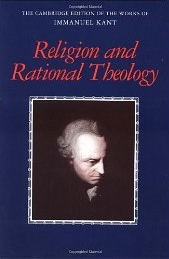In his Religion[1] Kant lays out an atonement model whose initial dynamics look very much like those of Anselm of Canterbury. However, in keeping with his commitments to outlining a religion using human reason alone, Kant then eschews any metaphysical discussion of Jesus as God incarnate and vicarious restitution owed by humanity which only God can make, offering instead an alternative model for satisfaction.
Like Anselm, Kant asserts that the duty of every human being is to do right. However, mere observation of ourselves and humanity around us tells us that we sin, an action that incurs a debt before God that must be repaid. We are unable to satisfy the debt through a promise of future good deeds because our perfect obedience to God is already required (6:72). There is nothing that we can do above and beyond perfect obedience to make up for our past mistakes.
 Anselm's classic formulation of satisfaction atonement proposes that God, knowing that no human could make satisfaction, became incarnate in the person of Jesus of Nazareth. Jesus then lived a perfect life, thus incurring no debt of his own.
Anselm's classic formulation of satisfaction atonement proposes that God, knowing that no human could make satisfaction, became incarnate in the person of Jesus of Nazareth. Jesus then lived a perfect life, thus incurring no debt of his own.
However, when Jesus was put to death – the penalty for sin – he went above and beyond perfect obedience, taking on the penalty incurred by those who sin, thus making satisfaction to God from the human side of the debt equation. Kant breaks with Anselm in several radical ways.
First, Kant argues that discussions of Jesus' divinity would only complicate matters, as the example this Son of God provides must be attainable by ordinary human beings. While agreeing that Jesus was subject to temptation without ever succumbing to it, "exhibit[ing] in [himself], through teaching, conduct, and suffering, the example of a human being well-pleasing to God" (6:63), Jesus' perfect obedience cannot be by reason of divinity (6:64).
Further, the debt incurred by sin, Kant tells us, is not transferable to another party in the same way as a financial debt. Thus even if the good-hearted innocent wanted to take on another's debt, it is not possible (6:72). Kant instead proposes a two-phase atonement model that introduces a subjective factor while retaining the mechanics of satisfaction.
Anselm's objective, transactional model is replaced by a subjective response to Jesus as moral exemplar. By looking to the example of Jesus for inspiration and following in his example, Kant proposes that it must be possible for others to somehow appropriate a righteous disposition for themselves. However, how this appropriation takes place, he remarks, is fraught with difficulties (6:66). Kant suggests that once this disposition has been appropriated, the conduct of our lives improves, and seeing the results of our efforts, we will persevere in fulfilling our duty to the law, becoming less and less sinful (6:68).
However, there is still the problem of old debts that remain unpaid. Kant suggests that at the point that a person makes the decision to follow the good, his internal disposition changes, the "old man" is put off as the "new man" is put on (6:73). He further postulates a 1:1 physical correspondence in numerical identity between the old and new self. The "death" of the old person serves as punishment that satisfies the debt incurred. Further, the long road ahead of the new self in which the crucifixion of the flesh will be the norm is a punishment unbefitting the new person whose maxim is grounded in good, but counts as punishment of the corrupt, former self (6:74).
 Because of his commitment to a religion within the bounds of reason, without various metaphysical or supernatural explanations, righteousness must be achievable without miraculous interventions. From this point of view, Jesus as human moral exemplar makes sense.
Because of his commitment to a religion within the bounds of reason, without various metaphysical or supernatural explanations, righteousness must be achievable without miraculous interventions. From this point of view, Jesus as human moral exemplar makes sense.
Further, Kant's novel interpretation of a 1:1 death and new person provides satisfaction under his new stipulation that each person pays her own debt without resorting to a supernatural calculus.
This old/new man substitution provides an elegant solution for those who seek restoration, but need their punishment too, rewriting one of the most important moments in Cur Deus Homo. While an affront to a human ruler's honor may be satisfied through either restitution or punishment, Anselm rules out punishment as a method of achieving satisfaction for God because it leaves humanity in a fallen state that belies God's full majesty.
Kant's solution extracts punishment from the old man and allows for redemption through the new man at the same time. However, by resorting to punishment as a means of satisfaction, he preserves projections of human honor onto God and vengeance as a divine trait – a view that I personally find wholly unsatisfying.
[1] Citations in this essay refer to Immanuel Kant, "Religion within the boundaries of mere reason," in (Cambridge; New York, NY, USA: Cambridge University Press, 1996).
How does Kant’s Religion understand atonement? Why would Kant understand it in these terms? To what extent is this explanation successful?



